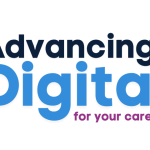A Learning Light consultancy approach….showing you how to succeed with e-learning
e-learning and knowledge management, well the term knowledge management is a little less hot than it used to be, but we remain big fans of the principles of knowledge management, and see the synergies with e-learning and social learning, indeed the works of Nonaka and Davenport are in our knowledge base.
As the e-learning industry has slanted toward e-learning 2.0, informal learning and most latterly social learning, the principles of knowledge management have been less high profile, which is a shame. Social learning can learn much form the ideas of knowledge management. Indeed the “Social Learning” sell to the “C level” could be more successful if it borrows some of the principles of Knowledge management….as they are both in the final analysis trying to address the same thing share the fact that “I Know This”.
This guide is not trying to sell you anything. It doesn’t beat about the bush and it doesn’t gild any lilies. What it does do is:
- Explain e-learning and knowledge management from the point of view of a business leader
- Strip away the jargon and tell you what suppliers are really trying to sell you
- Suggest strategies for using them separately and together
E-Learning is a training method that uses computers to deliver the instruction. Loads of different approaches have been tried over the last 20 years, but you can forget most of them. Unless you have a big budget and are prepared to invest a lot of time, what you can have is what the e-learning companies sell. Which boils down to this:
Yes, there are variations and this one picture isn’t the whole story. But studying e-learning is more like reading an interactive book than attending a course.
What’s in it for businesses?
These are the things you can do with e-learning that you can’t do with books:
- Publish quickly and cheaply
- Keep track of who has looked at material
- See who answered the questions right
- Link to other material (websites, policies etc)
- Withdraw old stuff… which can sometimes be vital
With up-market e-learning you can also:
- Promote collaboration with tutors and between learners
- Show videos and animations of people, situations and processes
- Offer different paths through the material for different levels of prior knowledge
- Simulate some business processes, especially those that involve decision-making
But the key thing is not the features – it’s the quality of the writing and illustration…just like a book.
Should I use it?
Whether you should use e-learning depends on the answer to this question: “How does it compare to the alternatives?”.
If you are happy with your existing training, don’t rush to abandon it. Good face-to- face training:
- Creates protected time for learning, away from deadline pressure
- Lets your people ask the trainer about the things they need to know to do their jobs better
- Lets them develop their new knowledge and skills together… which is generally how you want them to operate back on the job
These are the situations where e-learning can make a positive contribution:
- Quantity: You aren’t doing enough training
- Quality: Your processes are difficult or dangerous to practise for real, or can be explained better on-screen than in a classroom
- Timeliness: There’s a best moment for teaching a topic (such as induction, promotion or carrying out a business procedure that doesn’t happen often) and people don’t reach that moment in big enough groups to warrant a course
- Cost: The training you are doing is too expensive
- Convenience: It’s easier to get people to a PC than to a classroom (though if you don’t protect their learning time, getting them to the PC won’t make the learning happen)
After some trial and error, businesses usually arrive at a point where face-to-face is used for some topics and e-learning for others… and the two are blended together in a way that achieves more than either could on its own.
How do I get started?
If you haven’t used e-learning at all, look for topics where you can buy off-the-shelf products. Computer-related topics – such as how to use PowerPoint or MS Project – can be a good starting point since there’s a logic to learning these at a computer.
If you want to use e-learning to train your people in the things that make your business unique, you’ll have to have it custom-made. If you get a taste for it, you might one day develop it in-house. But to begin with you’ll be calling in the specialist e-learning suppliers and asking them how they can help you.
One way they might want to help is by selling you rapid development tools that let you quickly turn raw text and images into e-learning products. Be wary of this; it’s the quality of the writing and illustration that counts (see above) and it’s hard to achieve quality without experience.
Knowledge Management and Social Learning
Knowledge management is a process for sharing knowledge within a business. Of course you can’t actually share knowledge, which only exists in brains. What you can do is make it easier to use one person’s knowledge to solve another person’s problem. So Knowledge management actually means sharing information about knowledge. The tools of social networking, such as Linked-in groups, Twitter, Google circles and of course Facebook are well known, (as is Microsoft’s Sharepoint to the corporate world) and are well used to share with people “what I did” and “what I know” and the powerful mechanism of recognition is often enough to facilitate answers to questions posed in these environments.
What’s in it for businesses?
The value of knowledge management depends on the role of knowledge in the business’s everyday work:
- For those that manufacture a narrow range of products, most of how to do that is built into their systems and processes; not much depends on what’s in their people’s heads
- For those that fix leaky roofs, the knowledge needed generally travels to the site in the craftsman’s head and hands
- For those that customise cars or build software or do anything else that is both knowledge-based and collaborative, there could be some mileage in knowledge management.
Businesses in the last category use knowledge management for these reasons:
- To make success stories widely known so that others may copy effective approaches
- To share techniques, processes, documents, practices… anything that one person develops (or stumbles upon) that can be used for the benefit of others
- To make it easier to find the people with experience or expertise in difficult and specialised processes
Whether they succeed depends less on the system than on the way it is implemented. Here are some factors:
- Cost of time and distraction: Storing and labelling content takes time away from production
- Risk: Retrieving information might lead to errors if the situation it is retrieved for is different from the one it was stored for
- Security: You may not wish whoever to know what you don’t know, nor always share what you know
- Barriers: Experts might feel they’ll do better by keeping their expertise to themselves than by sharing it; asking for help might be seen as a sign of weakness; and so on
Making a decision:
Businesses only profit from knowledge management and social learning if the savings exceed the costs, the risks are managed, security ensured and the barriers overcome.
If your business is not both knowledge-based and collaborative, knowledge management/social learning is probably not for you (though it might have a role in some specialist or back-office activities).
All together
So how about using both e-learning and knowledge management/Social learning together?The ideas touch in lots of places:
If you train people more, your need for knowledge management is less.
If you have effective knowledge management, your need for training is less.
When people search a knowledge source, or seek answers from social media shouldn’t they be offered relevant e-learning solutions as well?
When people look for training, shouldn’t they be made aware of relevant knowledge management content or other means of learning?
The perfect e-learning would be rich with links to knowledge sources. The perfect knowledge management entry would have the pace and style of the best e-learning. In a perfect world they would be indistinguishable. Suppliers don’t join the two together, so it’s up to their customers to do so. Except that mainly they don’t. Even large professional service firms (the ultimate in knowledge-based and collaborative) generally keep e-learning and knowledge management in different parts of the business… or in the same part, but working to separate agendas.
Conclusions
Where you go depends on where you are – obviously. If you do decide to move forwards, be aware that social learning is still at “frontier town” stage… beneath the apparent order of suppliers’ offerings there is often a degree of chaos. If there’s one thing to cling to, it’s this: start from the needs of your business and its knowledge workers, and put the onus on suppliers to show how they can meet those needs.
This article was commissioned by Learning Light from Tailspinner and has been updated








